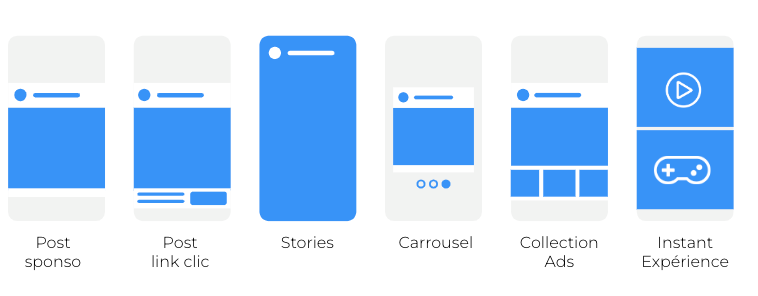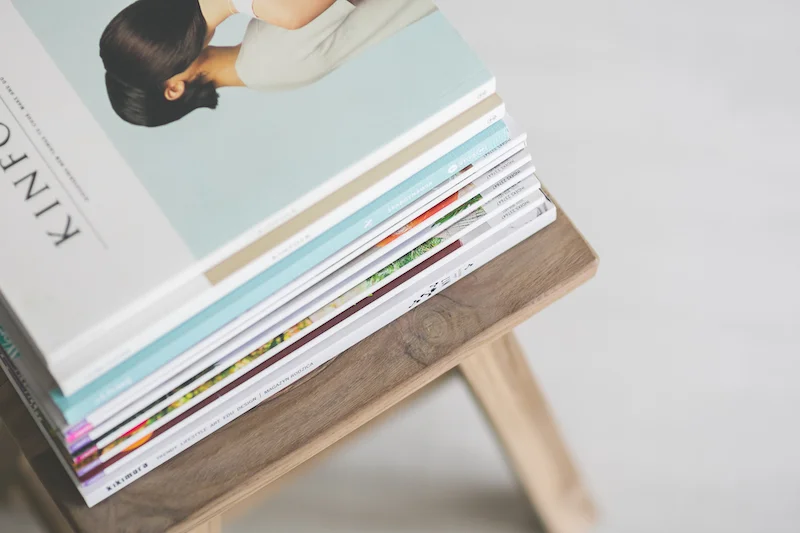Le prix du papier s’envole, et les questions environnementales deviennent de plus en plus pressantes, c’est pourquoi on parle depuis quelques temps de la fin du catalogue papier. Des initiatives comme Stop Pub ou Oui Pub existent depuis maintenant des années. L’inquiétude face aux prospectus n’est donc pas récente. Mais pourquoi entend-on subitement parler du e-catalogue ?
Cela est dû à l’annonce d’un grand groupe agroalimentaire qui a fait trembler le monde de la publicité et du marketing. E.Leclerc a décidé de ne plus distribuer de catalogues papiers dans la boîte aux lettres des Français. Ce qui a lancé le sujet de la digitalisation des catalogues papier.
Bien sûr, cette annonce n’est pas au goût de tous. Le catalogue représente une certaine nostalgie, toutes générations confondues. Mais alors que la durée de vie d’un catalogue tient au temps qu’il passe sur la table basse des Français, la digitalisation de celui-ci apparaît comme une solution plus simple et écologique, qui pourra suivre le consommateur partout où il va.
Non seulement impactant écologiquement, il s’agit également pour ces enseignes de grande distribution d’entrer en conformité avec les normes de confidentialité des données. Alors comment toucher ces consommateurs qui ont déjà fermé leurs boîtes aux lettres aux catalogues et quelles sont les solutions existantes pour anticiper la fin des prospectus dès cette année ?
Between the environment and the RGPD, why are printed flyers doomed to disappear?
Why say goodbye to paper catalogues?
Créer un prospectus demande beaucoup de ressources et d’énergie, il est considéré comme un déchet non recyclable. Alors que l’Europe s’engage à réduire son émission de gaz à effet de serre, le transport de ces catalogues jusqu’à nos boîtes aux lettres est considéré comme trop polluant.
En ce qui concerne la norme RGPD, le prospectus papier est très difficile à rendre conforme aux exigences de confidentialité et de sécurité des données. Ainsi, les entreprises choisissent de plus en plus de passer au format numérique pour leurs campagnes publicitaires afin de respecter les impératifs environnementaux et réglementaires.
Digital solutions as an alternative to flyers
Les médias numériques, qui peuvent offrir des contenus plus riches et plus interactifs, attirent aujourd’hui plus de consommateurs. Les technologies de l’information et de la communication permettent aux entreprises de communiquer directement avec les clients. Tout en leur fournissant des informations pertinentes et personnalisées, ce qui enrichît le e-catalogue. De plus en plus d’entreprises optent pour la promotion digitale pour promouvoir leurs produits et services. De plus, le coût des médias numériques est beaucoup plus faible que celui du papier, offrant ainsi de nombreux avantages aux entreprises.
When will flyers be a thing of the past?
Il n’est pas possible de déterminer avec certitude quand le prospectus papier disparaîtra définitivement. Cependant, de plus en plus de marques et de détaillants optent pour des alternatives numériques. Les solutions de promotions digitalisées permettent de réduire les coûts de production et de collecter des données en respectant le RGPD. Ces nouvelles solutions offrent des avantages en termes de traçabilité et d’engagement.
Social networks and e-catalogues: all the solutions you need to prepare for the end of flyers
How do you set up digital promotions?
Il existe des solutions pour se préparer à la fin des prospectus vers le e-catalogue. Plusieurs plateformes peuvent être utilisées comme canaux de communication et offrent de nombreux avantages, liés à l’engagement et au tracking des données. Il est vrai qu’un catalogue dans une boîte aux lettres ne garantit pas qu’il soit lu.
Le catalogue numérique est facile à mettre à jour et à partager, il peut être libre d’accès pour un large public en ligne. C’est un outil très utile qui ravira les plus nostalgiques puisqu’il garde l’essence même du catalogue papier. Le e-catalogue peut également détailler des offres ou des produits, tout comme son prédécesseur.
Les newsletters peuvent contenir les offres du moment ou une redirection vers le E-catalogue, le site marchant ou l’application mobile. Les e-mails peuvent faire découvrir de nouvelles gammes de produits, avec des bons de réduction personnalisés selon les préférences clients, tout comme un catalogue.
Aujourd’hui il n’est plus possible de se détourner des réseaux sociaux, c’est indéniable. Vous avez sûrement vous-même déjà plusieurs comptes à votre actif ! Ces plateformes sont un excellent moyen de promouvoir un catalogue mais aussi d’interagir avec une audience. La possibilité de détecter des tendances et de répondre directement aux clients rend la diffusion du catalogue plus complète. Entre les “j’aime”, les partages et les commentaires, ce sont autant de moyens que les clients ont pour faire part de leurs avis !
What would it look like to create an interactive catalogue?
Le temps du client qui tourne passivement les pages du catalogue est révolu !
Aujourd’hui vous pouvez non seulement faire passer du temps avec votre marque, mais également détecter les préférences clients, faciliter le parcours utilisateur et ainsi faire découvrir vos offres de manière plus efficace.
L’avantage de ce nouveau modèle est le nombre d’options qui peuvent y être ajoutées. Filtres, recherches ou options de navigation, toutes ces données peuvent-être collectées et utilisées pour fidéliser une base client mais aussi convertir à l’achat. Des images, des vidéos, des avis ou encore des liens vers des services supplémentaires permettent d’augmenter l’engagement d’un e-catalogue. Les possibilités sont infinies.
Our advice on how to stand out from the crowd and kick-start your digital transition
Capturing users’ attention can be difficult. Games remain an effective way of interacting with consumers and getting them to spend time with your brand. Promoting an e-catalogue through games is simple and will also enable you to meet your marketing objectives, whatever they may be. Enough to make you forget about the paper version!

A native gaming experience in display slots
La bannière display interactive booste l’engagement et la performance des publicités. Elle optimise la visibilité des bannières publicitaires et favorise l’interaction au service de vos objectifs marketing !
Idéales pour donner de la visibilité aux campagnes, ces bannières display augmentent la mémorisation et le temps passé sur les campagnes. Il sera possible d’y mettre en avant des produits ou des promotions. Grâce à une redirection vers le e-catalogue ou le site marchand, optimisez le parcours utilisateur tout en engageant votre audience.

Social networks such as Facebook, Instagram and Tiktok are ideal platforms to promote a digital catalogue. Adapt your strategy to the age, format and trend of your target consumer. It’s just as precise as putting a flyer in a letterbox, I promise!
Each social network offers a different interface with specific advantages. All of them can promote an e-catalogue and redirect users to a website, Facebook shop or Instagram shopping page. In this new digital age, creating an interactive catalogue is simple and effective.
Facebook / Instagram & Tik-Tok examples


Conclusion
The end of flyers may frighten some people. After all, they have been part of our daily lives for decades. But as consumers increasingly question their ecological impact, it’s time to look at other alternatives for promoting products or services.
Whether through games, emailing, display banners or social networks, let consumers tell you what they want by interacting with them. This will be more effective than monitoring the stickers stuck on the letterbox!
You’re now ready to take the plunge and anticipate this change this year. We look forward to leafing through your new catalogues… and swiping, of course!









